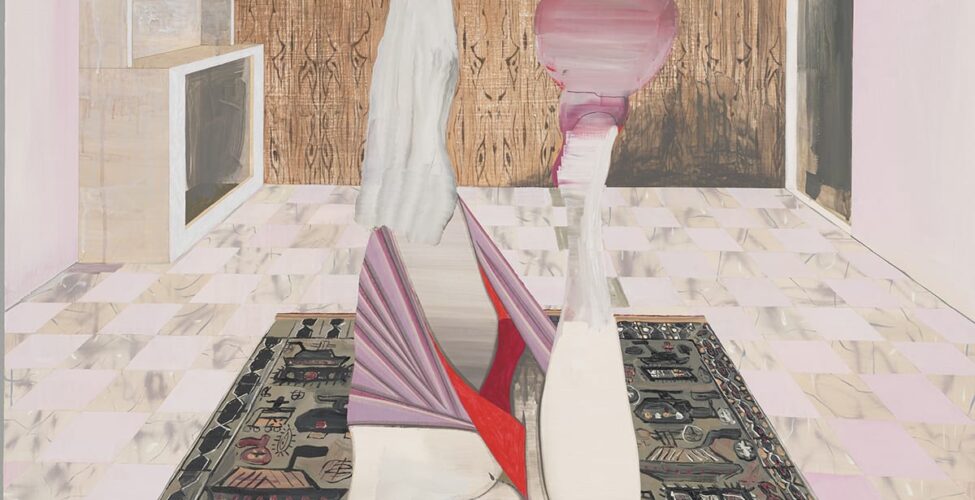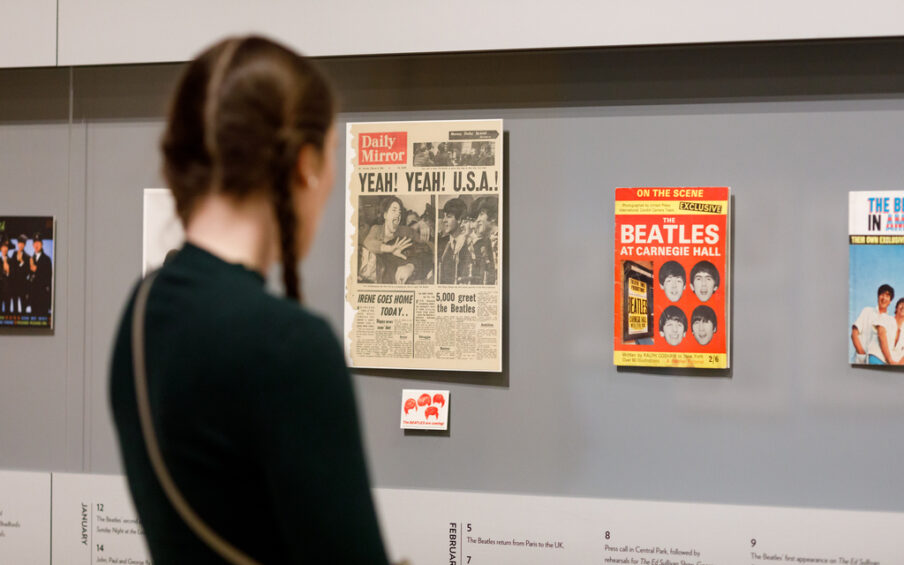“Elizabeth Malaska has continued her focus in painting with a feminist view exploring the place of the female body. Oftentimes looking to art history and the female form, Malaska nearly always references these moments while contextualizing them through a contemporary lens. Through this way of work, Malaska addresses the gaze, the subject of power and vulnerability, and the body as a changing site that reflects both social and political consequences. In Still Life on War Rug, Malaska’s central figure is taken from the central figure of Pablo Picasso’s Les Demoiselles d’Avignon, 1907 in the Museum of Modern Art, New York. However, the figure is upside down. Similarly to Picasso’s painting, the woman is distorted and her gaze is directly upon the viewer. A cold, pink hue dominates the banal mid-century interior space and in the foreground; underneath the figure is an Afghan war rug. Though Malaska states that she is conceptually, diametrically opposed to Picasso’s use of the female figure, what is shared here is a sense of confrontation and dislocation of the figure to the space. Often, Malaska’s figures are not whole—they do not line up or meet to create a harmonious body. For the artist, these moments where the lines of the figure do not meet up are the areas that open up a space of vulnerability, for empathy, or even anxiety. In Still Life on War Rug, the figure is forceful, and as she lies on this rug, the entanglement of war takes on the shadow of our longer wars throughout time, such as the violence of sexism, imperialism, or racism. As Malaska notes, ‘Embedding the war rug in a bunker-like yet domestic mid-century space points to the degree to which ongoing war has been and continues to be America’s praxis. As it’s always happening somewhere else, to someone else we can ignore it. But what is repressed does not disappear. Perhaps that is one message of the figure’s precarious and utterly unsustainable position.’”
—Grace Kook-Anderson, The Arlene and Harold Schnitzer Curator of Northwest Art
Elizabeth Malaska (American, born 1978). Still Life on War Rug, 2016. Oil, Flashe, charcoal, and graphite on canvas. Museum Purchase: Funds provided by the Arlene and Harold Schnitzer Endowment for Northwest Art, 2017.104.1 © Elizabeth Malaska



